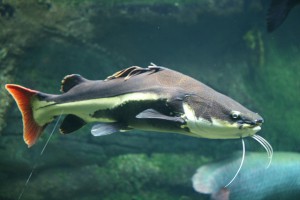Organochlorine pesticides in South African catfish pose cancer risk when consumed by humans
A recent study published in Chemosphere found that catfish collected from multiple freshwater sites in South Africa contained organochlorine pesticide residues above acceptable levels for cancer risk and hazard index risk for human consumption. Scientists collected fish from three fresh water impoundments, and analyzed their muscle tissue for organochlorine pesticides. They then calculated a human health risk assessment using methods consistent with those of the U.S. Environmental Protection Agency that take into account the average weight of the consumer, the consumer’s average life span, and average daily intake of the contaminated food in question. Using these methods, they were able to calculate whether catfish consumption led to a higher than normal risk of developing cancer (known as cancer risk) as well as the toxic, but non-cancerous effects of catfish consumption (known as hazard risk). They found various organochlorine pesticides in the sampled catfish from all three sampling locations, and fish from all but one of the sampling locations had pesticide levels high enough to pose a cancer risk and hazard risk to humans. These results are particularly troubling because the sharp tooth catfish is an important protein source for many poor, rural communities in South Africa. Additionally, the organochlorine insecticide DDT was detected even though it is not used near the waters where fish are collected, suggesting that dangerous pesticides may be traveling long distances by way of water runoff or by movement through the air.




